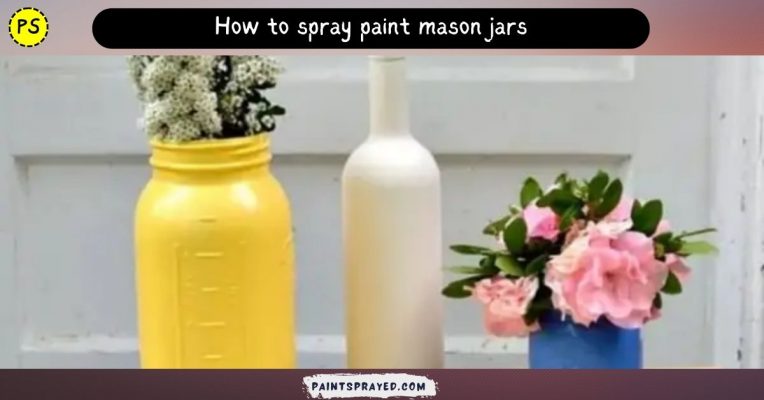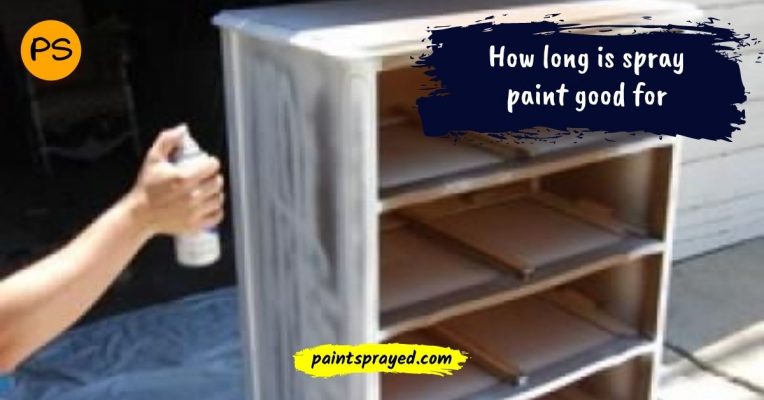Today I have come up with a new informational guide for newbies on how to spray paint mason jars at home without making any mistakes.
As you know, I have plenty of years of painting experience and love doing it and helping those who are beginners or thinking of starting out.
This guide of mine will eventually help those amateurs who want to finish great after completing the paint job on mason jars.
Don’t miss any points explained in this blog post if you are a fresher.
How to spray paint mason jars
Now I will explain all the steps which I follow to spray paint mason jars at home and I achieve the results which I want after following these steps.
These are necessary to follow for newbies so they can get the results that they want.
Wear protective gear
Before you begin spray painting mason jars, it is important to take the necessary precautions to protect yourself from the fumes and the paint itself.
First, you will need to gather all of the necessary protective gear, including a face mask, gloves, and a protective suit.
Once you have all of the gear, you will need to put it on properly. The face mask should cover your nose and mouth, and the gloves should cover your hands.
The protective suit should be zipped up and cover your body from head to toe.

Once you are properly outfitted, you can begin spray painting the mason jars. Be sure to work in a well-ventilated area to avoid inhaling the fumes.
Clean the jars
First, remove any labels or stickers from the jars. Next, wash the jars in warm soapy water.
Finally, rinse the jars in clean water and allow them to air dry. Once the jars are clean and dry, they are ready to be spray painted.
Sand the jars
To sand mason jars before spray painting them, follow these steps:
- Begin by cleaning the jars with soapy water and a sponge. This will remove any dirt or grime that could prevent the paint from adhering properly.
- Next, use a piece of sandpaper to roughen up the surface of the jars. This will help the paint to stick better.
- Once the jars are sanded, wipe them down with a damp cloth to remove any dust.
- Finally, spray paint the jars as desired. Be sure to use a primer if you want a smooth, professional-looking finish.
Spray paint mason jars
To apply paint coats on mason jars with spray paint, begin by sanding the jars to create a smooth surface. Next, apply a primer to the jars and let them dry.
Once the primer is dry, apply the spray paint in light, even coats. Let the paint dry between each coat. Once the jars are fully painted, let them dry for 24 hours before using them.
What spray paint works on mason jars?
You can use spray paint that is specifically formulated for use on glass surfaces, such as Krylon’s Glass Paints or Rust-Oleum’s Specialty Glass Spray Paint.
These types of spray paint are designed to adhere well to glass surfaces and provide a durable finish.
It’s important to clean the jars thoroughly and remove any oils or dirt before applying the spray paint to ensure proper adhesion.
Also, make sure to apply the paint in a well-ventilated area and follow the manufacturer’s instructions for the best results.
What kind of paint will stick to glass jars?
Acrylic paint is a good option for painting on glass jars as it adheres well to the surface and dries quickly. It is also water-based, making it easy to clean up with soap and water.
Another option is enamel paint, but it can be harder to clean up and often requires a brush-on primer before painting.
Can I spray paint mason jar lids?
Yes, you can spray paint mason jar lids.
However, it is important to use a spray paint that is specifically designed for use on metal surfaces, as regular spray paint may not adhere well to the metal surface of the lid.
It is also important to clean the surface of the lid thoroughly before painting to ensure proper adhesion.
It is also important to consider that if the lid is used for canning, you should use a food-safe paint that is labeled as safe for use on surfaces that come into contact with food.
FAQ’s of How to spray paint mason jars
Summary of how to spray paint mason jars
In conclusion, the most important things to keep in mind when spray painting mason jars are to seal the jar and handle carefully, apply a light coat of paint, and don’t overdo it with the paint.
Spray painting mason jars is a great way to add a decorative touch to your home or garden. It’s a simple DIY project that you can do in any color you want.
If you have any suggestions or questions then you may ask in the comments section I will answer those as soon as possible.

Matthew Edward is a professional painter who loves to paint and wants to share useful tips and tricks which he had learned in many years of experience in painting. He also used many products that can be used for painting he has tried and tested each and every product to give an unbias opinion about it in his review. This blog is very useful for those newbies who want to learn painting without making mistakes.






